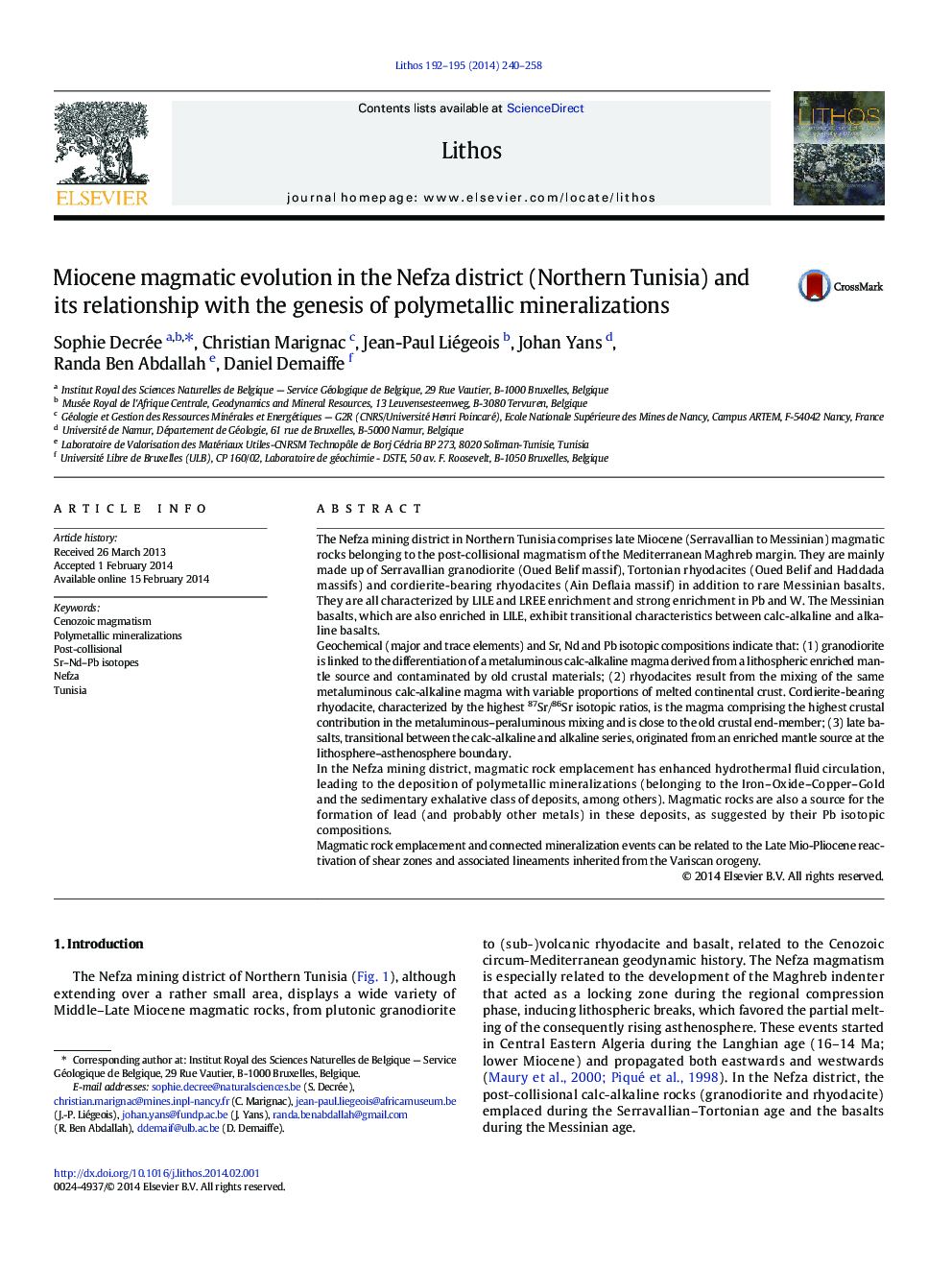| کد مقاله | کد نشریه | سال انتشار | مقاله انگلیسی | نسخه تمام متن |
|---|---|---|---|---|
| 4716054 | 1638679 | 2014 | 19 صفحه PDF | دانلود رایگان |
• A variety of Neogene magmatic rocks is present in the Nefza district (N. Tunisia).
• We reconsider the magmatic processes based on new geochemical and isotopic data (Pb, Sr, Nd).
• New data suggest the involvement of metaluminous calc-alkaline and peraluminous magma.
• Bagnold effect and filter-press processes also account for the magmatic rock variety.
• Magmatic rocks are seemingly a source of lead for the Nefza ore deposits.
The Nefza mining district in Northern Tunisia comprises late Miocene (Serravallian to Messinian) magmatic rocks belonging to the post-collisional magmatism of the Mediterranean Maghreb margin. They are mainly made up of Serravallian granodiorite (Oued Belif massif), Tortonian rhyodacites (Oued Belif and Haddada massifs) and cordierite-bearing rhyodacites (Ain Deflaia massif) in addition to rare Messinian basalts. They are all characterized by LILE and LREE enrichment and strong enrichment in Pb and W. The Messinian basalts, which are also enriched in LILE, exhibit transitional characteristics between calc-alkaline and alkaline basalts.Geochemical (major and trace elements) and Sr, Nd and Pb isotopic compositions indicate that: (1) granodiorite is linked to the differentiation of a metaluminous calc-alkaline magma derived from a lithospheric enriched mantle source and contaminated by old crustal materials; (2) rhyodacites result from the mixing of the same metaluminous calc-alkaline magma with variable proportions of melted continental crust. Cordierite-bearing rhyodacite, characterized by the highest 87Sr/86Sr isotopic ratios, is the magma comprising the highest crustal contribution in the metaluminous–peraluminous mixing and is close to the old crustal end-member; (3) late basalts, transitional between the calc-alkaline and alkaline series, originated from an enriched mantle source at the lithosphere–asthenosphere boundary.In the Nefza mining district, magmatic rock emplacement has enhanced hydrothermal fluid circulation, leading to the deposition of polymetallic mineralizations (belonging to the Iron–Oxide–Copper–Gold and the sedimentary exhalative class of deposits, among others). Magmatic rocks are also a source for the formation of lead (and probably other metals) in these deposits, as suggested by their Pb isotopic compositions.Magmatic rock emplacement and connected mineralization events can be related to the Late Mio-Pliocene reactivation of shear zones and associated lineaments inherited from the Variscan orogeny.
Journal: Lithos - Volumes 192–195, April 2014, Pages 240–258
